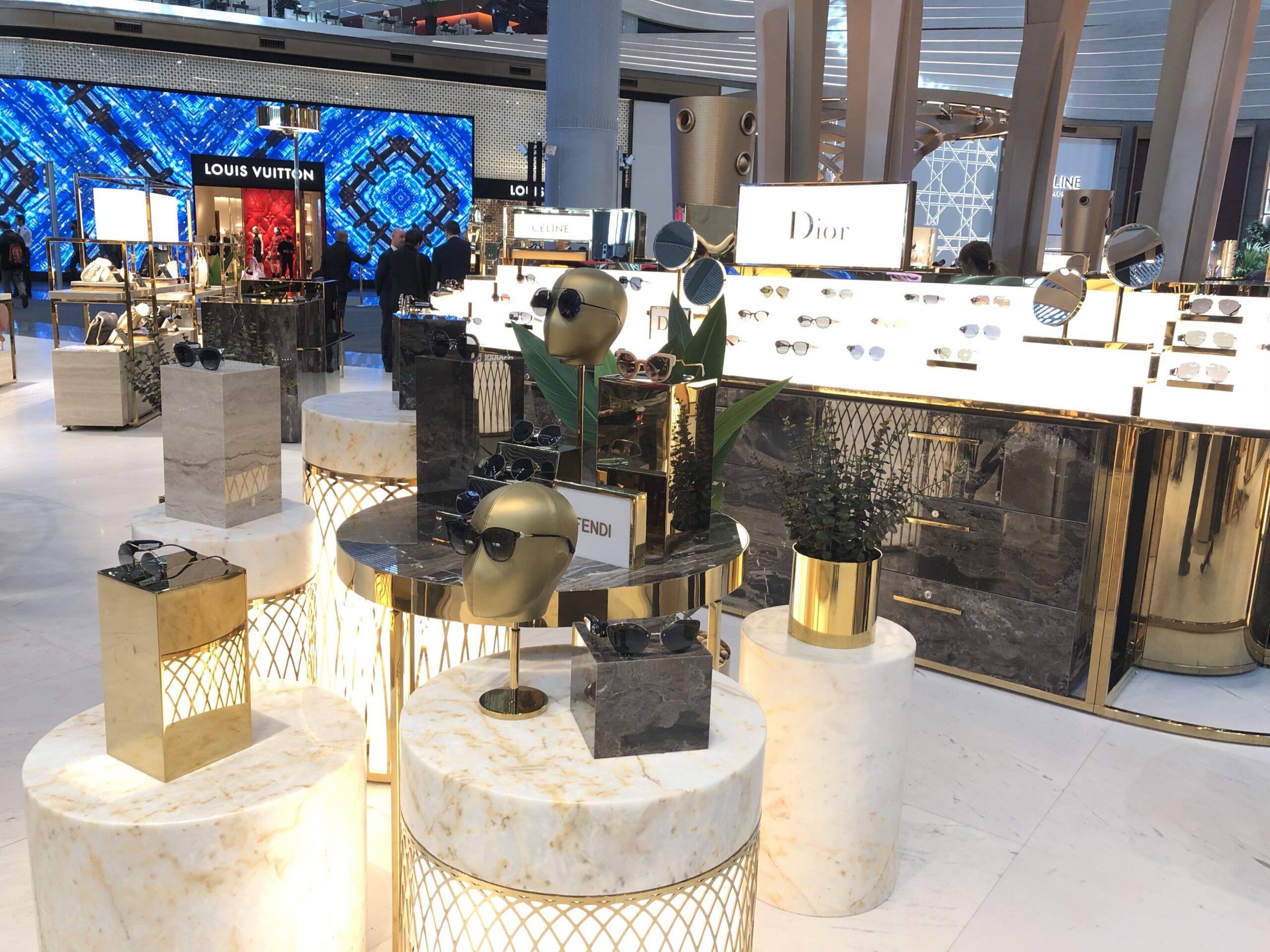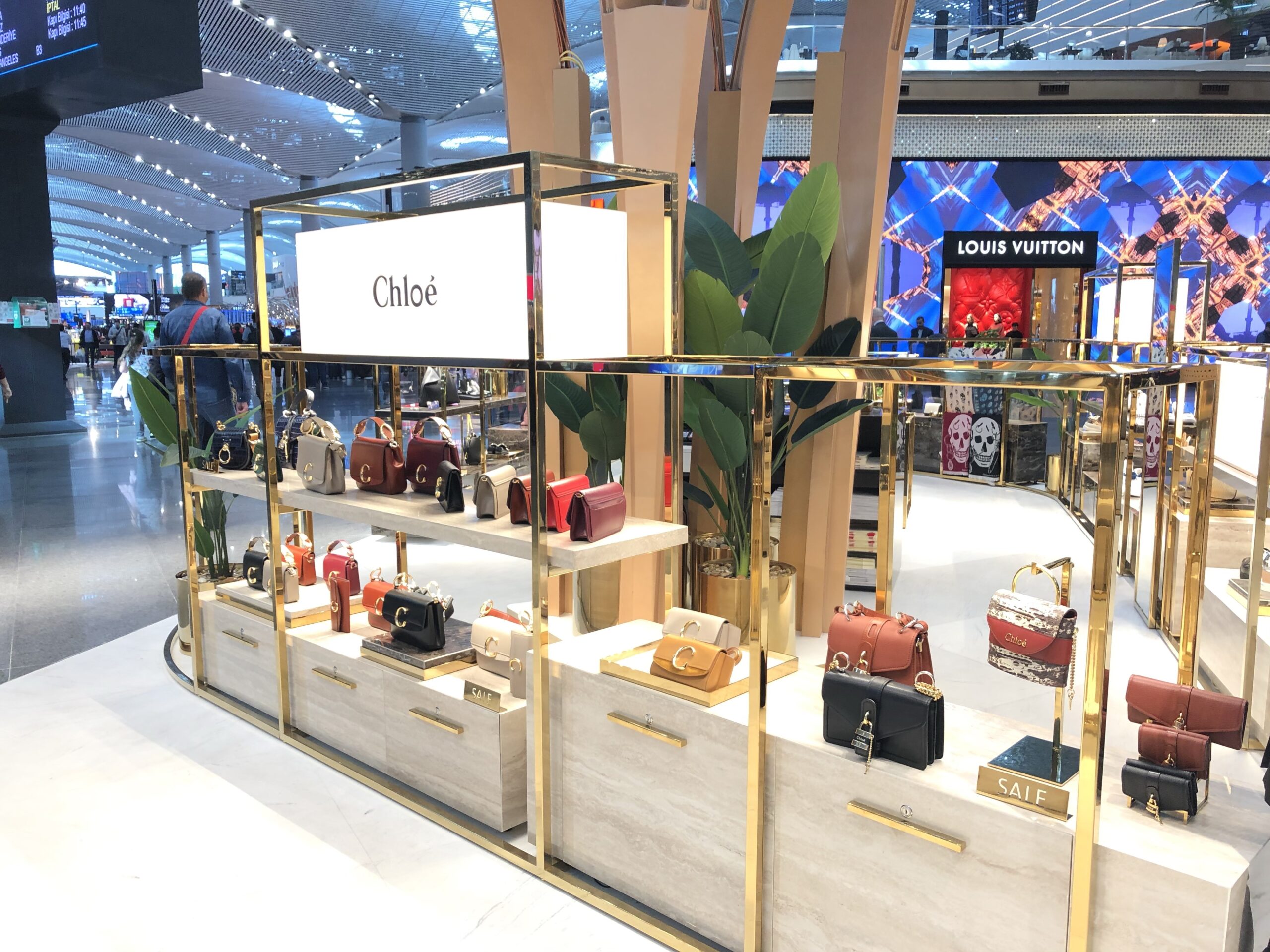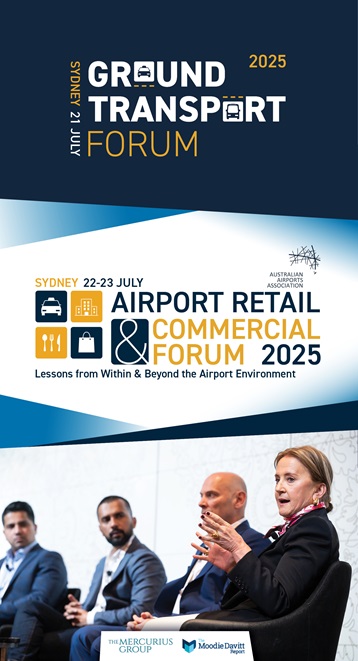TURKEY. “We have created a special luxury customer environment. It’s a balanced mix of mono-brand boutiques and a luxury marketplace area never seen before in this size in travel retail. Istanbul Airport is a benchmark for travel retail to the customer, versus downtown shopping and other airports.”
Speaking to The Moodie Davitt Report, that was how Gebr Heinemann Purchasing Director Fashion & Accessories Jan Richter described the newly opened ‘Luxury Square’ at the Turkish hub. As reported, ATÜ Duty Free, a partnership between TAV Airports and Unifree Duty Free/Gebr Heinemann, officially opened the area on Thursday, rounding out the spectacular luxury-led airside Zone 5.



The 800sq m department store-style area sits in an eye-catching central location just after immigration and security, surrounded by an array of branded boutiques.
Some 28 houses representing an eclectic mix of fashion & accessories sectors are presented in a multi-category, multi-brand concept, pioneered by Heinemann for its airport network. Unusually for such a large luxury space, the brands are displayed using generic rather than personalised furniture and tied together with a common design, flooring and lighting. Some 110sq m is set aside for sunglasses, with 92sq m for watches & jewellery.
The video on this page was produced by Peter Marshall, the leading industry film maker, and is part of a wider Moodie Davitt Marshall TV collaboration in travel retail. The video is also available on trunblocked.com
The fashion offer includes Burberry, Kenzo, Givenchy, Loewe, Stella McCartney, Alexander McQueen, Chloé, Marc Jacobs, Off-White, Palm Angels, Alanui and more. The store also offers watches & jewellery of brands such as Chopard, Messika, Piaget, Atelier Swarovski, Tous, Bee Goddess, Gucci, APM Monaco and Rado; as well as eyewear from Balenciaga, Cartier, Celine, Chloé, Dior, Fendi, Gucci and Saint Laurent.
Richter said: “We have used our design and generic furniture from Plajer & Franz, our Berlin-based design partner, to bring all these luxury brands together in one space. The airport in general is already a benchmark, but luxury in Zone 5 is the very heart of that. It’s next to the entrance, to security and it’s the traveller’s first view of the shopping mall here.”



He said brands that were initially unsure about entering the generic environment were convinced by the design concept and location. Once several of the large houses bought into the vision, others quickly followed.
“The brands have their own strategies of course and most would be used to personalised space. But here we have created a seamless environment that connects all of them with a strong design framework with brass, other materials and colours along with the lighting ‘trees’ that give the area more profile. The furniture presents that department store feel.
“This zone at its size and with the brand line-up is unique in the Heinemann portfolio. For our fashion & accessories strategy it is all about the department store strategy – whether it’s Moscow Terminals C or E or Hamburg Airport, design wise these are linked together with that look. The same applies here but on a different scale.”


ATÜ Duty Free CEO Ersan Arcan told us: “The key is that this area should add quality and value to the whole experience of travelling, as well as that of shopping.
“We want to be the preferred airport among transit passengers if they have the choice about where to travel through, because we have the right areas, brands and service. We have a ‘high street’ that is just under 1km long and the Luxury Square is the cornerstone and jewel in the crown of Istanbul Airport.
“One should understand that it’s not only about great design or construction but engineering and rethinking space. In the heart of such an environment as this, surrounded by all these great luxury boutiques, you have a responsibility to behave and present yourself in a certain way.
“That means every element from communication to design language to service quality is all at the highest level. We selected the brands accordingly and we selected the staff to work here accordingly, with a year of training at the highest level in advance of this opening. It is that high level of ambition and professionalism that we want to communicate to the market and to our customers.”



Unifree Duty Free CEO Ali Şenher added: “We have great demand from brands to come into our environment, especially as they have seen how the existing brands have performed. There is limited boutique space, which was allocated to the major houses before the airport opened, so this solution of the Luxury Square represents a good outcome to satisfy that demand. And if fits fully into our luxury zone.
On the performance of the luxury business since the airport opened in April 2019, Şenher said: “Luxury has been a highlight in the first year; some brands have even doubled sales compared to what they forecast. The Luxury Square opening also supports other luxury boutiques and importantly there has been no cannibalisation so far. Internally we had a lot of discussion about whether that would happen, but our experience has been good.
“So it is an appropriate offer for today. In the past year luxury exceeded our expectations so that just 6% of our sub-contracted brands are in need of some uplift. Some local brands need and are receiving our support. They are getting used to travel retail for the first time but are not at the level of the global brands yet. Some of the many transferring travellers don’t know Turkish brands yet although they are known and popular among Middle East transit passengers so that helps the business.
“Also there are customers who shop across both international and local luxury; we have that array of offer to suit all tastes and we aim to capture everyone’s attention.”

Emerging trends
The traditionally strong sub-category of handbags leads sales, but perhaps surprisingly, among the other segments performing above expectations are footwear and streetwear.
Richter said: “In airport retail the market is usually led by bags and other goods where you don’t need a changing room, but we see an opportunity in premium, special edition sneakers, and ready-to-wear streetwear from certain trendy luxury brands. People don’t expect to see these brands at the airport so are positively surprised.”
“We have tried to create a perfect mix, with some classic brands that are appealing strongly to millennials today, such as Burberry, Givenchy or Chloé, and hot brands such as Off-White or Palm Angels.”




Many brands that have entered the luxury environment have brought their A-games to Istanbul, with new concepts and firsts, which builds the airport’s reputation among consumers and the supplier community.
Şenher noted: “We know this is an attractive location, thanks also to Heinemann’s strong connection with the brands. We act as one company in this respect. We have seen many brands making first-to-market launches or their worldwide premieres here or launching in Istanbul alongside three of four other major airports, which puts us in good company. At the old airport that did not happen as much as it does now. Now the industry is asking for more promotions, entertainment, events in the shops, and we have the space.”



Cross-selling opportunity
Importantly, the opportunity to purchase across categories in the Luxury Square is strong. Arcan said: “You don’t feel you are in an area just for fashion & accessories as typically exists in an airport. It’s about cross-merchandising and the chance to buy sneakers, handbags, sunglasses, which are among the most in-demand categories. It’s an area that is easy to shop, easy to access.”
Richter added: “What is important is that you can cross-sell categories but also cross-sell brands. You often cross-sell within boutiques from one category to the other, from bags to shoes to accessories, but here you are combining brands together and so can sell additional brands alongside additional channels. You don’t see that often at airports.”
Arcan said that the mix would continue to evolve, with trialling of new or up and coming luxury brands part of the opportunity in this new zone.
“That element of newness, or of brands not yet experienced, is also valuable. We will follow the customer’s direction in the evolution of the line-up. This is definitely a great area to understand the customer reaction and what they want. The early weeks have been a success but we are always asking what is the winning element that we need here? What are the customers asking for? What is their perception? We are pleased that we could put our common vision into a dream come true.
“That is aided by our price and value message too. We have an attractive offer compared to the domestic market and against the international market also, which we watch carefully. We ensure we are truly tax free, which is as it should be. Above all I expect to provide service quality above price every time. This project is also the result of 20 years of experience at ATÜ in partnership with Heinemann. The development here will never stop in this dynamic environment.”



On what the Luxury Square and wider luxury offer says about Istanbul Airport’s status within the industry, Şenher said: “Istanbul was long considered the centre of the world and is now a central point for global travel. We hear regular positive feedback. We see some travellers coming here even for the day, mainly from the Middle East, to eat, to shop, flying in in the morning and back that night.
“When we planned the airport it was 2015, amid a downturn. We built the shops according to what was needed at first, not for 200 million passengers yet. There is 56,000sq m and we have opened 40,000sq m to date. So there is vast space in our back of house areas, which we are ready to put into action once we hit the next big passenger milestones in future.”
Looking to the next steps in growing the luxury business, Richter said: “Fashion changes fast. We will keep the long-term successful brands but it’s important to add new on-trend brands as they come along. Even amid a tough period such as this with the coronavirus, if you have the right brands that people want it’s still possible to reach your turnover targets.
“Our strategy with our JV partners is to set up these kinds of department store-style environments across airports. It has shown its success as we implement this strategy across our network. It’s in our plans for the future.”

Coronavirus impact on luxury market
Even with the impact of a sharp reduction in Chinese travel – Turkish Airlines has halted flights to China – the partners were upbeat about the prospects for the business in the rest of 2020, if the COVID-19 outbreak can be controlled and contained quickly.
Arcan said: “We have had a drop in sales, at least -20% in the fashion & accessories business, since the crisis began [more for some individual brands, we understand- Ed]. So there has been damage to business but we survive and the international portfolio we have helps us to balance and limit that. We have had these experiences before. This is a true travel retail crisis and we must prove again how resilient we are, to manage the problem as best we can.
Şenher said: “We budgeted for €900 million euros in sales as Unifree Duty Free this year and Istanbul Airport alone is €860 million with our sub-contractors. Yes, we have lost business from the Chinese not coming here but this is not yet the high season. We have lost €7 million to date in core duty free until now we estimate, and we’ll lose some in March we expect, but if it recovers from April we feel we can still hit our budget.”
He added that the third runway, which opens at Istanbul Airport in June, will also boost passenger throughout and dwell time. The expansion will extend landings/takeoffs from 80 per hour currently to over 120, and will allow for reduced aircraft taxi times.
“This is an important development, allied to more new airlines and frequencies starting this year. So my expectations are still high for this business,” concluded Şenher.












